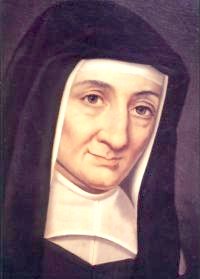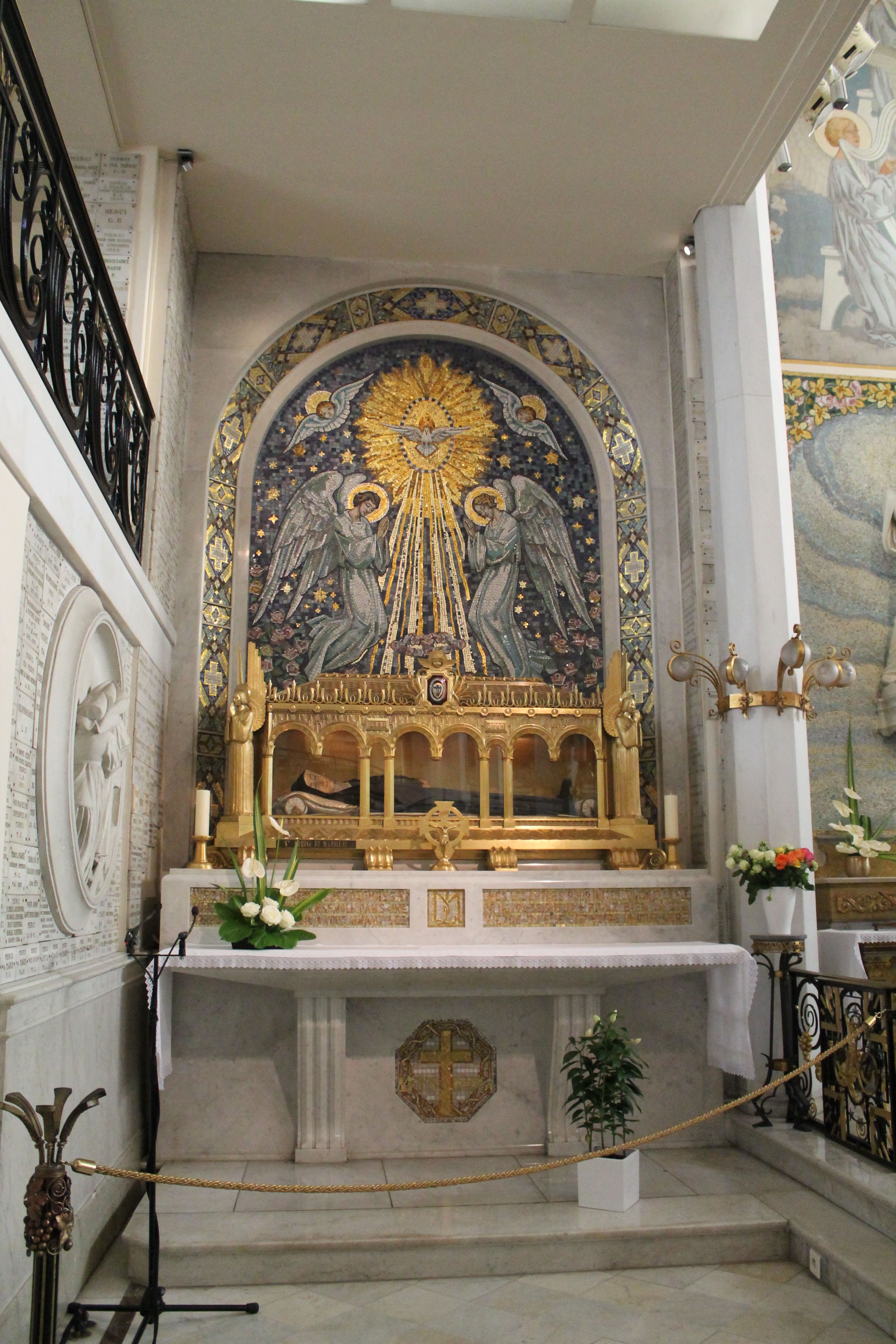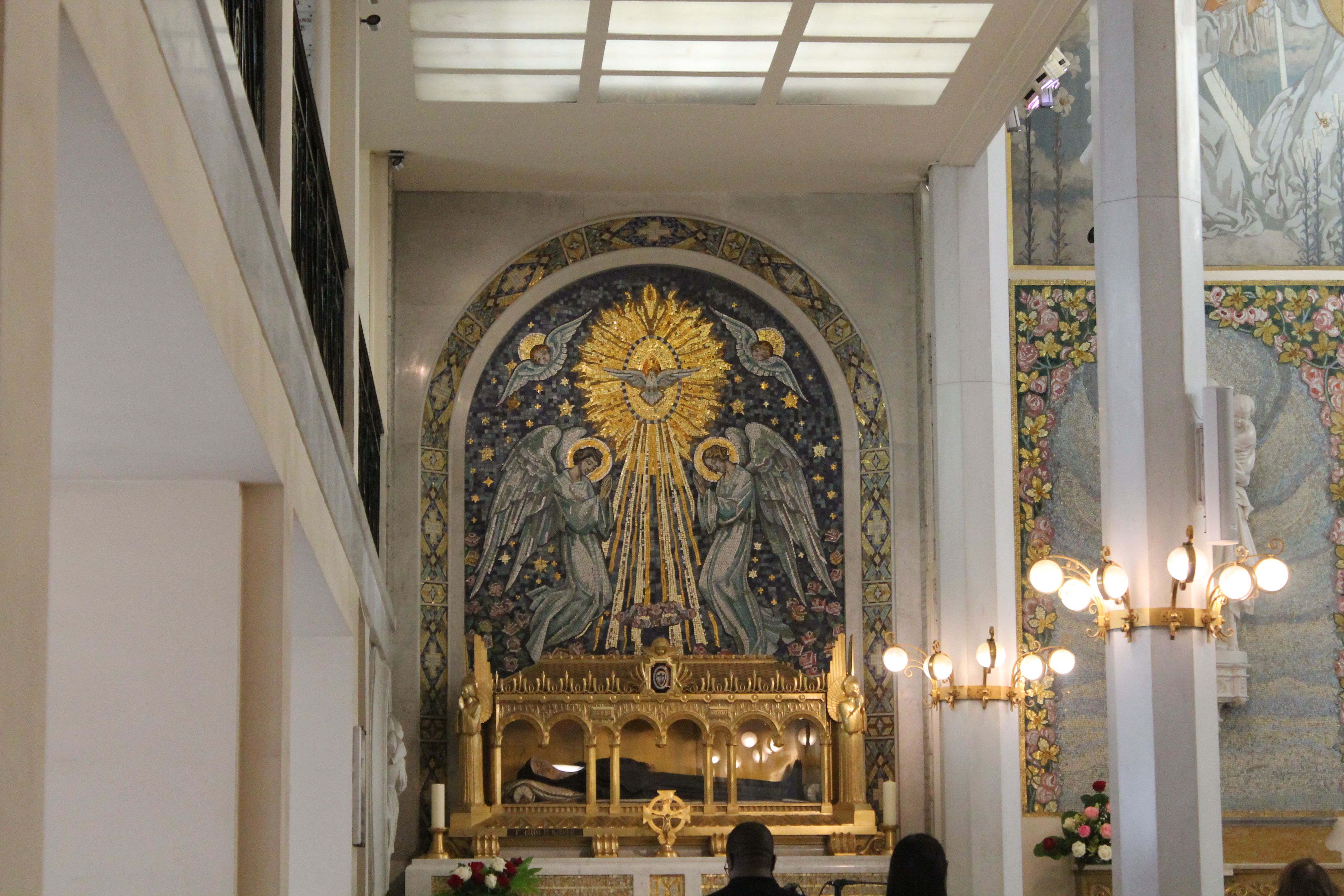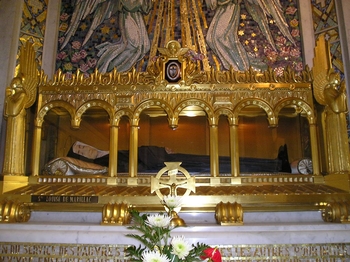Louise de Marillac was born out of wedlock in Paris, on August 12, 1591, and never knew who her mother was but was acknowledged and raised by her father, Louis de Marillac, a member of the aristocracy. When her father married, Louise had a difficult time adjusting and was sent as a resident student to a Dominican convent where her aunt was a religious. This experience deepened Louise's introspective ways and her many intellectual skills, as well as her desire to be a religious. After her father died and resources were limited, she lived in a boarding house where she had the opportunity to learn many basic domestic and organizational skills, as well as the secrets of herbal medicine. This experience rounded out her classical, upper-class education and prepared her well for her future service.
Louise married Antoine le Gras, secretary to the Queen Mother of France, but their marital happiness was short-lived because of his poor health. As a young matron, Louise traveled and socialized among both the royalty and aristocracy of France, but she was equally comfortable with the poor, no matter their desperate situations. She held a leadership role in the Ladies of Charity, an organization of rich women dedicated to assisting persons oppressed by poverty and disease.
Suffering was never far from Louise. During civil unrest, her two uncles who held high rank within the government were imprisoned. One was publicly executed and the other died in prison. In 1623, when illness was wasting Antoine (who died in 1625), depression was overcoming Louise. While at prayer, Louise had a vision in which she saw herself serving the poor and living the evangelical counsels in community. She wrote this "lumière" ("Pentecost experience" of Saint Louise) on parchment and carried it on her person as a reminder that despite her difficulties, God was guiding her life. In that vision a priest appeared to her, whom she later identified as Vincent de Paul, her future confidante and collaborator in ministry.
In 1629, Vincent de Paul, who in 1625 had established the Congregation of the Mission (the Vincentians), invited Louise to assist him with the Confraternities of Charity in the parishes of France. These tasks were therapeutic for Louise and formative for her future work and that of the Vincentian family. She conducted site visits to assure the quality of the service being offered; reviewed financial accounts for stewardship reports; and encouraged the workers and volunteers to see Christ in those whom they served.
Through this work, she gained a deep knowledge of the needs of the poor, developed her innate management skills and identified effective structures for service. On November 29, 1633 in her own home she began to train young women to address the needs of poor persons and to gain support from their life together. From this humble beginning, the community of Daughters of Charity emerged. Louise provided leadership and expert management to the evolving network of services she and Vincent inspired.
Louise, who died on March 15, 1660 just a few months before Vincent de Paul, was beatified on May 9, 1920 and proclaimed a Saint of the Church on March 11, 1934.
Louise de Marillac was born out of wedlock in Paris, on August 12, 1591, and never knew who her mother was but was acknowledged and raised by her father, Louis de Marillac, a member of the aristocracy. When her father married, Louise had a difficult time adjusting and was sent as a resident student to a Dominican convent where her aunt was a religious. This experience deepened Louise's introspective ways and her many intellectual skills, as well as her desire to be a religious. After her father died and resources were limited, she lived in a boarding house where she had the opportunity to learn many basic domestic and organizational skills, as well as the secrets of herbal medicine. This experience rounded out her classical, upper-class education and prepared her well for her future service.
Louise married Antoine le Gras, secretary to the Queen Mother of France, but their marital happiness was short-lived because of his poor health. As a young matron, Louise traveled and socialized among both the royalty and aristocracy of France, but she was equally comfortable with the poor, no matter their desperate situations. She held a leadership role in the Ladies of Charity, an organization of rich women dedicated to assisting persons oppressed by poverty and disease.
Suffering was never far from Louise. During civil unrest, her two uncles who held high rank within the government were imprisoned. One was publicly executed and the other died in prison. In 1623, when illness was wasting Antoine (who died in 1625), depression was overcoming Louise. While at prayer, Louise had a vision in which she saw herself serving the poor and living the evangelical counsels in community. She wrote this "lumière" ("Pentecost experience" of Saint Louise) on parchment and carried it on her person as a reminder that despite her difficulties, God was guiding her life. In that vision a priest appeared to her, whom she later identified as Vincent de Paul, her future confidante and collaborator in ministry.
In 1629, Vincent de Paul, who in 1625 had established the Congregation of the Mission (the Vincentians), invited Louise to assist him with the Confraternities of Charity in the parishes of France. These tasks were therapeutic for Louise and formative for her future work and that of the Vincentian family. She conducted site visits to assure the quality of the service being offered; reviewed financial accounts for stewardship reports; and encouraged the workers and volunteers to see Christ in those whom they served.
Through this work, she gained a deep knowledge of the needs of the poor, developed her innate management skills and identified effective structures for service. On November 29, 1633 in her own home she began to train young women to address the needs of poor persons and to gain support from their life together. From this humble beginning, the community of Daughters of Charity emerged. Louise provided leadership and expert management to the evolving network of services she and Vincent inspired.
Louise, who died on March 15, 1660 just a few months before Vincent de Paul, was beatified on May 9, 1920 and proclaimed a Saint of the Church on March 11, 1934.
Family Members
Advertisement
Explore more
Sponsored by Ancestry
Advertisement










